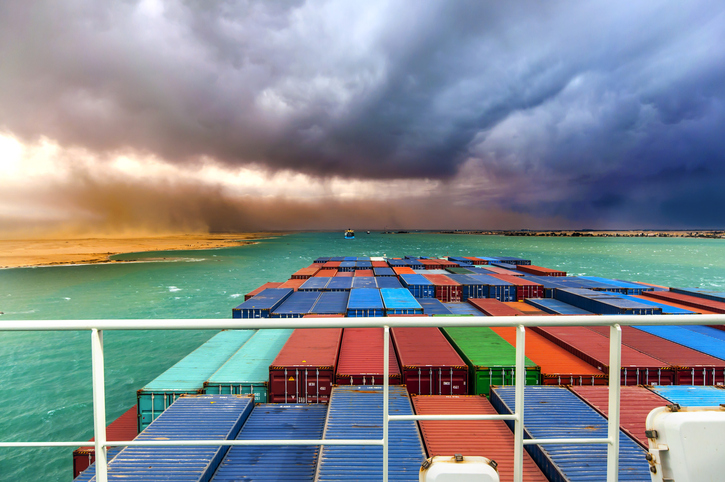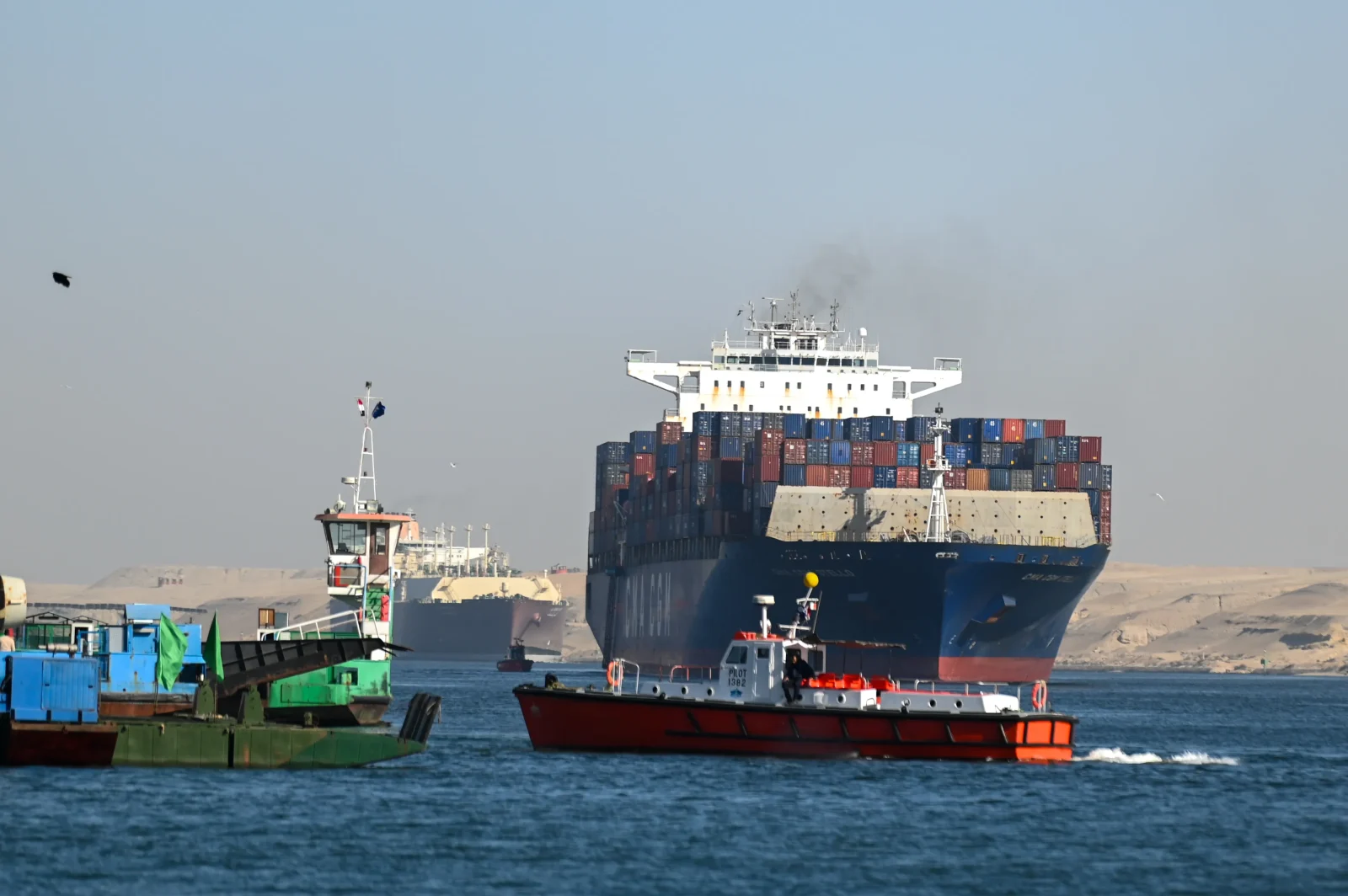Shippers have rerouted approximately $80 billion worth of cargo away from the Red Sea due to threats from Houthi militants in Yemen.
Carriers are altering their routes following 15 attacks in the Red Sea since the onset of the Israel-Hamas conflict in October. U.S. Defense Secretary Lloyd Austin announced the creation of an international task force to address these security concerns.
Details of the U.S.-led initiative are still pending confirmation. Dan Mueller, lead analyst for maritime security firm Ambrey in the Middle Eastern Region, stated that they continue to advise clients to adhere to Best Management Practices, which include thoroughly checking vessel affiliations, assessing transit risks, preparing crews for emergencies, and other safety protocols.
As of Wednesday morning, 121 container vessels are taking the longer route around Africa instead of passing through the Red Sea and the Suez Canal, according to Kuehne+Nagel.
Paolo Montrone, senior vice president and global head of trade sea logistics at Kuehne+Nagel, told, “That number will increase as more vessels adopt this routing.”
He added, “The total container capacity of these vessels is 700,000 twenty-foot equivalent units (TEUs),” with containers available in both 20-foot and 40-foot sizes.
Ocean carriers and companies are working to inform U.S. shippers about potential delays caused by the Houthi threat.
The Houthis, a militant group supported by Iran, have shown support for Hamas in its conflict with Israel. Earlier on Tuesday, U.S. Defense Secretary Lloyd Austin announced the formation of an international task force to address the security issues.
Fleet capacity has increased by over 20% in the past year, which may allow carriers to deploy additional vessels, according to Antonella Teodoro, senior consultant for MDS Transmodal.
Teodoro stated, “Demand is expected to remain flat, so there is capacity available to maintain ocean carrier schedules and handle the containers once bound for these diverted vessels.”
However, she also noted that diversions and network adjustments will take time and may lead to increased rates.
Teodoro emphasized the need for an international authority to monitor capacity and pricing to ensure a more resilient global supply chain, particularly in light of disruptions at both the Suez and Panama canals.
The Panama Canal has been dealing with low water levels for several months. Port authorities anticipate congestion due to updated arrival times and planning needs.

“The situation is very volatile, and reconfiguring these networks is complex, so we can expect a certain level of disruption,” Montrone said.
He also noted that the shortage of empty containers in Asia could lead to delays of 10-20 days in repositioning them to areas of demand.
Maersk, a shipper that has halted operations in the Red Sea, expects delays of two to four weeks, according to CEO Vincent Clerc.
“Europe is more dependent on the Suez,” Clerc added, “The delays will be more pronounced in Europe.”
For U.S. shippers, there are various trade routes, including from Asia to West Coast ports or via the Panama Canal to Gulf and East Coast ports.
Delays from the Panama Canal had previously led shippers to book vessels through the Suez Canal to reach the East Coast.
SEKO Logistics has informed U.S. clients to expect delays of approximately 10-14 days for East Coast cargo, with potential additional delays at ports if many ships arrive simultaneously outside their berthing windows.
A detour around the Cape of Good Hope adds about 3,400 nautical miles, or roughly 14 extra days, depending on speed, according to Matthew Burgess, VP of global ocean services at C.H. Robinson.
Burgess noted, “Pausing transit and extending it could strain global capacity, leading to rate increases and War Risk Surcharges.”
He emphasized the importance of contingency planning for freight, inland movement, inventory, and manufacturing needs during these disruptions.
ITS Logistics is advising U.S. clients that the Red Sea and Suez Canal situations are evolving quickly and might take weeks or months to resolve, according to Paul Brashier, vice president of drayage and intermodal.
“We recommend that shippers moving goods from Southeast Asia to the U.S., previously using the Suez Canal, consider booking the Trans-Pacific route to the U.S. West Coast,” said Brashier, adding that lower rates and faster transit are preferable, and eastbound containers could be moved by rail or truck.
OL-USA is advising clients to employ a multi-pronged approach for shipments, including using all three coasts to maximize vessel space and employing rail and truck capacity.
Alan Baer, CEO of OL-USA, said, “Shippers should also book ocean freight space from now through early February to account for possible extended transit times.”
Logistics executives are concerned about a potential surge in freight rates. In June 2022, Congress passed the Ocean Shipping Reform Act, which provided the Federal Maritime Commission (FMC) with the tools to regulate shipping price increases.
FMC Chairman Dan Maffei assured that the FMC would closely monitor rates to identify any violations of the Shipping Act that prevent unreasonable behavior by ocean carriers.







Leave a Reply